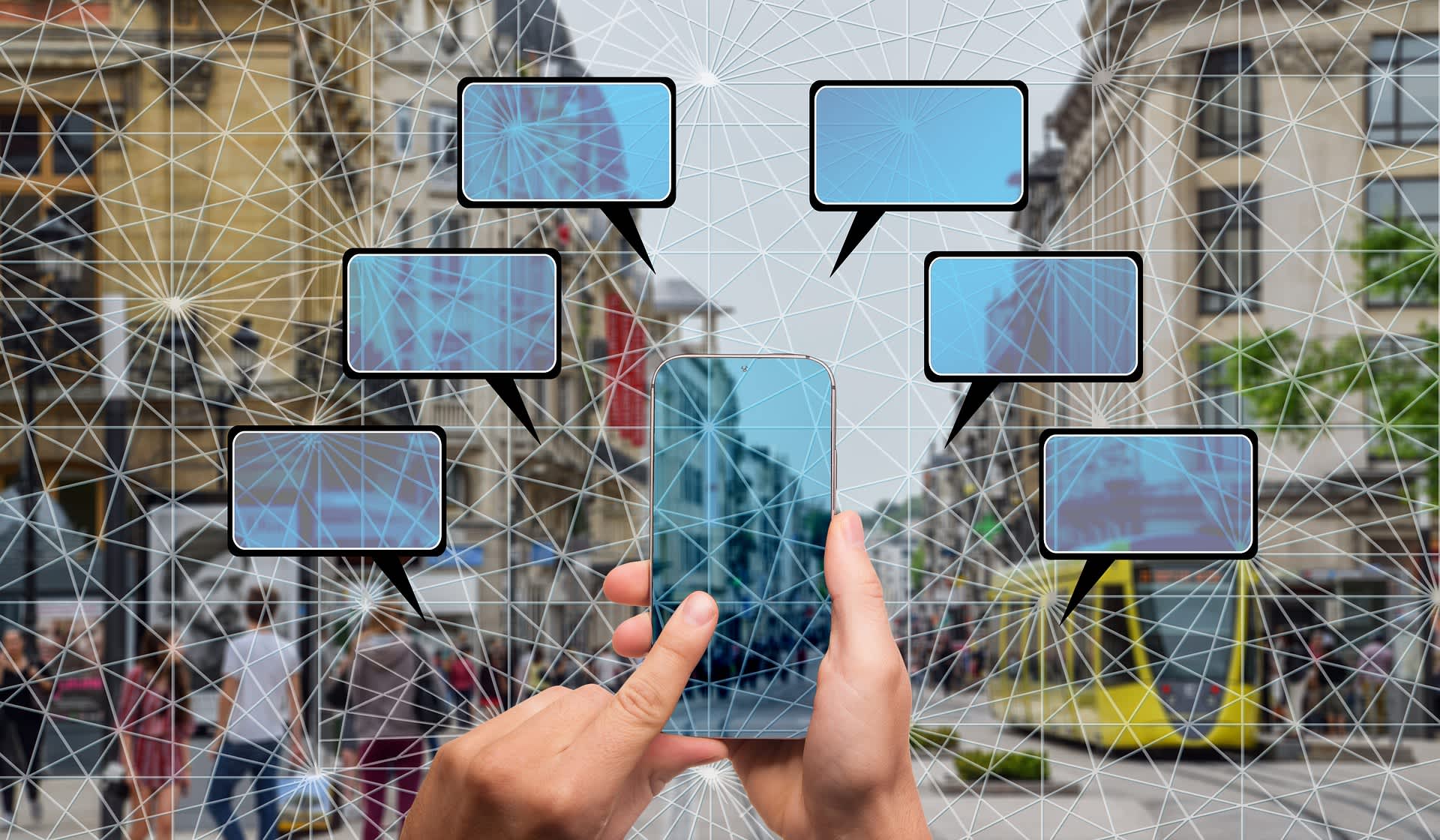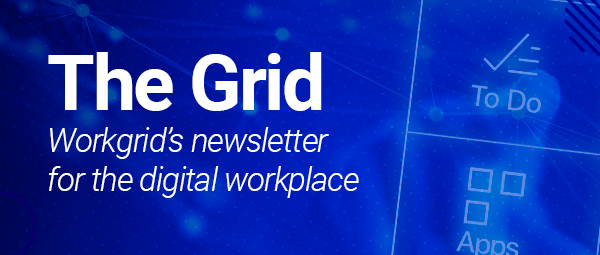Challenges of the modern digital workplace
The business world today is faced with an embarrassment of riches:
There's more data available than ever before enabling employees to make better decisions - more than 1.7 megabytes generated per second for every human being as a matter of fact
An abundance of fast, flexible communication platforms foster engagement and keep employees connected, even when working remotely
Intelligent technology that helps employees be more productive is readily available and continuously evolving to meet changing needs
But it’s like they often say – you can have too much of a good thing, because more often than not, these modern-day advancements are more of a curse than a blessing.
Despite having every possible advantage they could ask for, employees today are overwhelmed. They’re flooded with information, drowning in communications, and scrambling to toggle back and forth between all the disparate applications they need to manage their workload.
![[asset] communication-tools-stock-600x350](https://images.ctfassets.net/z7p73u8c0thn/VedIfqjTYLr7PFb4qrH25/42d437551af6c0b68f5382e900f374e0/communication-tools-stock-600x350.png?w=600&h=350&q=60&fm=png&bg=transparent)
91% of US workers admit that they sometimes delete or discard work-related information without fully reading it! (Source)
The impact of this digital workplace overload is significant. It costs the US economy a minimum of $900 billion per year in lowered employee productivity and reduced innovation, and results in:
Poor decision-making
Decreased productivity
Increased likelihood of errors
Feelings of disconnection
Increased frustration
and more
So how can we address these modern-day challenges? Let's start by understanding the causes of friction in the digital workplace.
#1: Information overload
Information overload isn’t new. The term was coined in 1964 and the concept has been around for even longer, ever since the easy proliferation of books made it clear that there were infinite sources for information.
That age-old realization is playing out in modern organizations. They’re overrun with information, a situation that’s complicated by the fact that most of it is maintained in silos and stored in different repositories across the enterprise, making it impossible for employees to find it when they need it.
![[asset] digital-workplace-employee-technostress-stats](https://images.ctfassets.net/z7p73u8c0thn/2CxuJmZZs0AQLKwySnAHXh/14398050928eca36fceea7d08b1ee4e3/digital-workplace-employee-technostress-stats.png?w=600&h=350&q=60&fm=png&bg=transparent)
#2: Too many channels for communication
When communications are factored into information overload, the problem gets even worse. Email has historically been the biggest offender.
Employees spend an average of 17 hours per week reading, responding to, and sending work emails
In 2021, it is predicted that 320 billion emails will be exchanged each day - up from 269 billion in 2017
Each business user sends around 122 emails per day and spends almost a third of the day writing and processing messages
Only about 38% of the average inbox contains emails that are relevant or important, so it's no surprise, that 60.8% of employees ignore emails at work
Now add Slack and the plethora of other messaging apps to the mix and it’s easy to see how fast things have gotten out of control. Workers aren’t just getting more inbound communications than ever before; they’re getting them in a multitude of channels and are constantly trying to figure out how to best manage their attention.
![[asset] multi-channel-disruption](https://images.ctfassets.net/z7p73u8c0thn/5sibZ4I0Jy1xUS7hLI2DsI/e0049edaefc0f627ab3df7bb87534b3c/communication-ga9c4236ad_1920.jpg?w=1200&h=700&fl=progressive&q=60&fm=jpg&bg=transparent)
Studies show that the average worker is interrupted somewhere between 4 to 12 times every hour. (Source)
This is raising a host of issues, not the least of which is the increasing tendency for employees to simply overlook communications because there just isn’t enough time to absorb it all.
#3: Overabundance of applications & technology
It’s hard to credit the pandemic with any positive effects, but it did have one clear silver lining. It forced organizations to accelerate their digital transformation plans, compelling them to accomplish in weeks what likely would have taken years.
But that swift metamorphosis wasn’t all up-side. While the array of purpose-built applications delivered over the past year and a half were crucial to meeting the demands of a sudden shift to remote work, they unintentionally created a fragmented user experience by overwhelming users with an influx of new technology. 68% of workers toggle between apps up to 10x an hour. When you consider the more than 23 minutes it takes to regain focus between each interruption, that’s a lot of lost productivity.
Employees simply have too many tools to deal with in their day. And what’s worse is because this influx of tools was deployed so tactically and with such urgency, most employees don’t even know how or why to use what they’ve been given.
#4: Repetitive, manual process
Simply creating digital replicas of old-school manual processes (i.e., much of what was done during the digital transformation of the pandemic) doesn’t automatically create efficiency. Consider the process of requesting vacation time:
Check available time-off balance
Submit time-off request
Block time on Outlook calendar
Set up out of office reply
Alert team on Slack and other messaging apps to your absence
This one simple act, performed countless times by every employee, takes multiple steps across a variety of systems, all just to fulfill the complex requirements of back-end systems. It’s taking time away from focusing on more meaningful work and is ultimately impacting business success. And that’s just one example, there are plenty of others, like engaging with service desks, finding pricing and product information, etc. Organizations are rife with time-consuming digital processes that are in desperate need of an efficiency overhaul.
![[asset] To Dos - SAP Ariba Example](https://images.ctfassets.net/z7p73u8c0thn/6r3UmCikG51LMFb3FjuzSS/ff4e7e0f8165f5063017fb3c2f2ddaaa/Template-Carousel-SAP-Ariba-Procurement.png?w=928&h=679&q=60&fm=png&bg=transparent)
Reducing routine processes to a single step or two can improve productivity and reduce stress across the workforce dramatically.
#5: Tasks and information not integrated into the flow of work
With workstream collaboration platforms like MS Teams now widely used, you would think that employees finally have a platform that enables focusing on work and collaborating from a central location. Great in theory – not so much in practice.
Right now, there’s still too much other “stuff” taking place outside of Teams for that one platform to be considered the ultimate solution. Communications, routine tasks, information finding, etc., are all done in other applications across the enterprise, hindering the ability of Teams to take on the role of the central place where work gets done.
Overcoming friction in the digital workplace
Eliminating friction in the digital workplace starts with understanding the overload that friction creates. The Digital Workplace Group’s report “Digital Workplace Overload: How to Reduce Employee Technostress,” is a great resource, exploring the seven psychological theories that govern the experiences of employees who are in the clutches of digital workplace overload.
The “information processing theory” discussed in the report is particularly relevant since it seeks to understand how people process high volumes of information. The employee response to overload detailed by this theory should strike fear into the hearts of digital workplace leaders – most of the information that people encounter is simply ignored, with only the most important items passing through to working and them long-term memory.
![[asset] Atkinson and Shiffin Memory Model](https://images.ctfassets.net/z7p73u8c0thn/6g0be7bCKDGFWbRAETbSM3/8787372b1373d8c2f040951b21364cbb/Atkinson-Shiffrin-Memory-Model.png?w=754&h=350&q=60&fm=png&bg=transparent)
When faced with too much information, the brain will automatically disregard what it deems unnecessary to focus only on the information it considers important. (Source: "Digital workplace overload. How to reduce employee technostress" report, Digital Workplace Group)
So what does this mean for the digital workplace?
“Users can easily become bombarded by the amount of information and number of inputs in the digital workplace. Efforts to bring together or simplify this information can help avoid overwhelming their information processing capacity.” (Source: "Digital workplace overload. How to reduce employee technostress" report, Digital Workplace Group)
This is exactly how Workgrid eliminates digital friction. It serves as an experience layer that abstracts just the tasks and information employees need from across the enterprise, presenting it all in a single, easy-to-consume experience that’s integrated into the flow of their work.
![[asset] employee-touchpoints](https://images.ctfassets.net/z7p73u8c0thn/3MG4bXuUjVXTJ59gSDfB9E/db4aac142c3304140e2a517ae29fa6a9/employee-touchpoints.png?w=1200&h=461&q=60&fm=png&bg=transparent)
Workgrid in the digital workplace
Workgrid eliminates the main causes of friction in the digital workplace:
Solves information overload – focusing employees' attention on what they need to know and do, creating a unified, personalized experience for each employee in the channel they prefer.
Streamlines communications - creating a central location where employees can consume communications from across the enterprise, including system and corporate communications and news.
Simplifies the overabundance of apps and tech - integrating with top enterprise apps to surface just the data and services employees need from the respective systems into a single, easy-to-use experience.
Eliminates repetitive manual processes – simplifying processes and workflows from multiple steps across multiple systems down to just one or two clicks.
Integrates tasks into the flow of work – creating a multi-channel experience that makes the tasks, information, and communications accessible wherever employees work the most, whether on the intranet, via a desktop or mobile app, or integrated into popular collaboration platforms, such as MS Teams.
To see how Workgrid can accomplish all of this, request a demo.




